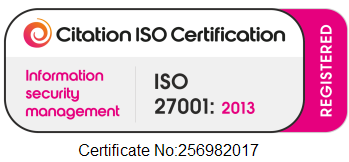A Full Glossary of Technical Terms and Acronyms
You’re in a sales or a technical meeting and people are talking and about HTTP and HTTPS, DPI and Cookie Policies are mentioned. Sitemaps, SEO, SEM, PSL, PDF, PNG are mentioned and you are sat there thinking “What language are they talking in?”
We are used to using the terms as we have been using them for years and the trouble is, the list keeps growing, but you don’t have to sit there not knowing what these phrases are as we’ve created a new page full of the terminology, acronyms and initialisms that you hear thrown around in meetings!
Here is a very small excerpt from the full list that we have created, although we welcome any further input.
You can read the full list of terminology here and why not read and impress everyone at your next meeting!
A
Address Bar:
The address bar is a text box, usually at the top of your browser window, which displays the address of the web page you’re looking at, or where a web address can be typed into. With many browsers, the address bar can also be used as a search box.
B
Bounce Rate:
A common metric in analytics programs such as Google Analytics, bounce rate is defined as “the percentage of single-page sessions in which there was no interaction with the page.” A bounce rate of 50% means that half of the traffic that arrived on a page of your website left (by hitting the back button or closing their tab/window) without clicking to another page first. This can be a misleadingly high number for bloggers: oftentimes, people will click a link, read an entire article, and then leave. Even though they may have spent 5 minutes reading, this would still qualify as a bounce.
C
Cookie:
A cookie is a message given to a web browser (the application you use to get online) by a web server. Cookies help identify website users who have visited previously, or those that are there for the first time, and can prepare customized content for them depending on those criteria.
D
Dots per Inch (DPI):
DPI refers to print resolution of an image, or of the output device (like a printer). The resolution for web is 72 dpi, while the standard for print is 300 dpi, which allows for much greater clarity.
E
Error 404:
A 404 error message means the page you’re trying to reach cannot be found. This can happen if you link to a page that doesn’t exist or if a page is taken down and the link remains up.
F
File Transfer Protocol (FTP):
FTP allows you to copy or send files (HTML documents, graphic images, spreadsheets, etc.) from one computer to another via the Internet. A user ID and password are needed to use FTP, unless Anonymous FTP is allowed.
H
Hypertext Mark-up Language (HTML):
HTML is a cross-platform language for creating and formatting web pages. Elements and tags are used to affect copy, images, sounds, frames, animation and more.
*While we are on the subject of being clever, do you know the difference between Acronyms and Initialisms? Acronyms, are abbreviations where the abbreviation is formed from letters of other words. The part of the definition of acronym that many people miss is that the resulting abbreviation needs to be pronounceable as a word. Examples of this would be things like RAM (Random Access Memory); LASER (Light Amplification by Stimulated Emission of Radiation) and NASA (National Aeronautics and Space Administration).
Initialisms are very similar to acronyms in that they are made up of letters of some name or phrase, usually the first letter of each word as is common with acronyms. The difference between an acronym and initialism is that the abbreviation formed with initialisms is not pronounced as a word, rather you say the individual letters, such as FBI (Federal Bureau of Investigation), CIA (Central Intelligence Agency), and DVD (Digital Video Disk).
Visit our Glossary page to see our initial list of terminology. Impress people in the pub and in meetings!




Comments are closed